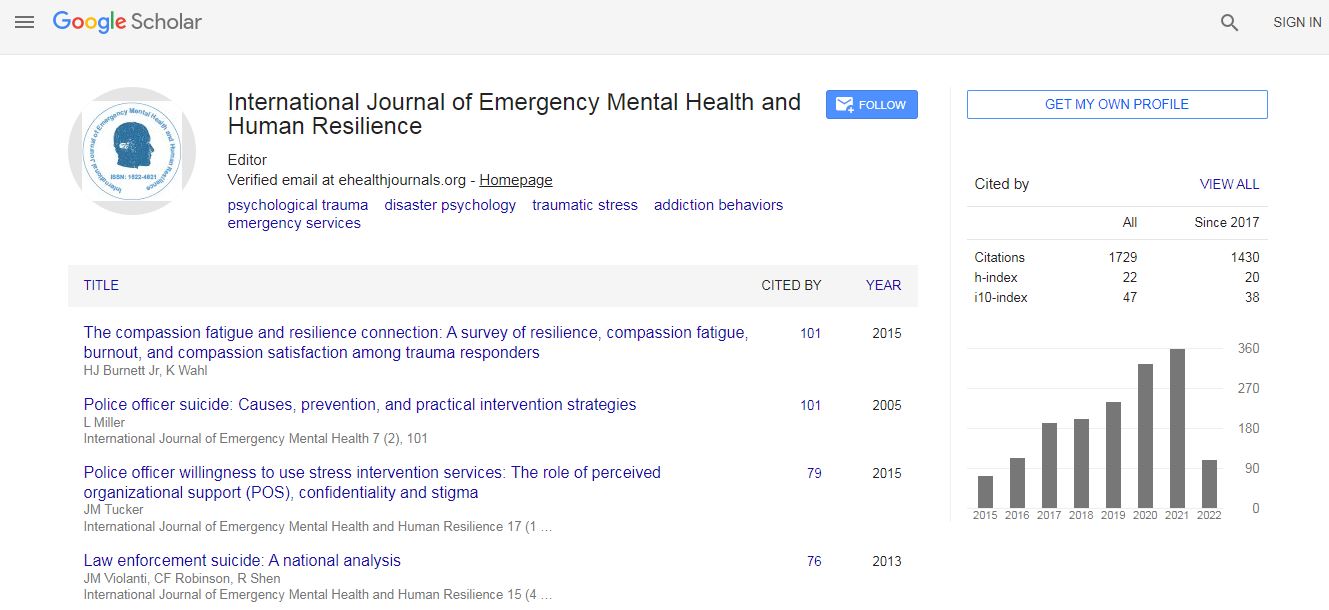Our Group organises 3000+ Global Conferenceseries Events every year across USA, Europe & Asia with support from 1000 more scientific Societies and Publishes 700+ Open Access Journals which contains over 50000 eminent personalities, reputed scientists as editorial board members.
Open Access Journals gaining more Readers and Citations
700 Journals and 15,000,000 Readers Each Journal is getting 25,000+ Readers
Google Scholar citation report
Citations : 4948
Indexed In
- Index Copernicus
- Google Scholar
- CiteFactor
- Publons
- Pubmed
- science Gate
- scispace
- world cat
Useful Links
Related Subjects
Share This Page
Deciphering the role of dopamine neurons in motivational signaling and behavioral control
Joint Event 12th International Conference on Mental Health and Human Resilience & 9th International Conference on Mental Health and Psychiatry
Marziyeh Zarei
University of Pavia, Italy
Posters & Accepted Abstracts: Int J Emerg Ment Health
Abstract
Motivational salience-coding dopamine (DA) neurons, being excited by both rewarding and aversive events with weaker responses to neutral events, offer a suitable instructive signal for neural circuits to learn to detect, predict, and respond to situations of high importance. In this regard, DA neurons play a crucial role in motivating efforts to attain high-value goals and in translating awareness of task demands into consistent motor performance. In the ventromedial substantia nigra pars compacta (SNc) and ventral tegmental area (VTA), signals are sent to the ventromedial prefrontal cortex and orbitofrontal cortex (OFC), influencing choice assessment and updating outcome expectations. The nucleus accumbens (NAc) shell receives phasic DA signals encoding motivational value, while the dorsal striatum processes both motivational value and salience signals. These signals guide value learning in striatal circuitry, with burst firing facilitating reward learning and pausing facilitating avoidance learning. Similarly, in the dorsolateral midbrain, DA neurons play a role in coding motivational salience and project to the dorsal and lateral frontal cortex, impacting cognitive functions such as attention, working memory, and decision-making. Phasic activation of DA neurons regulates dorsolateral prefrontal cognitive functions tightly. Moreover, some lateral prefrontal neurons respond to rewarding and aversive cues, correlating with success in working memory tasks. Salience signals may be directed to the NAc core, enhancing motivation, cognitive flexibility, and response to reward cues. Understanding these signals sheds light on how the brain processes motivation and cognitive performance in various contexts. The brain receives motivational value signals through various sources, including the lateral habenula (LHb) and the central nucleus of the amygdala (CeA). The LHb, located in the epithalamus, negatively influences DA neurons and affects learning processes. Conversely, the CeA, within the amygdala, plays a crucial role in orienting, attention, and motivational responses to rewarding and aversive events. These regions contribute to the intricate network of motivational signaling in the brain, shaping behavioral responses to environmental stimuli.Biography
Marziyeh Zarei is a graduate of psychology, neuroscience and human sciences master at the University of Pavia (Italy). Her interests are in neuroscience and cognition. With her passion for this field, Marziyeh hopes to make a significant contribution in the field of cognitive issues in the coming years.

 Spanish
Spanish  Chinese
Chinese  Russian
Russian  German
German  French
French  Japanese
Japanese  Portuguese
Portuguese  Hindi
Hindi 